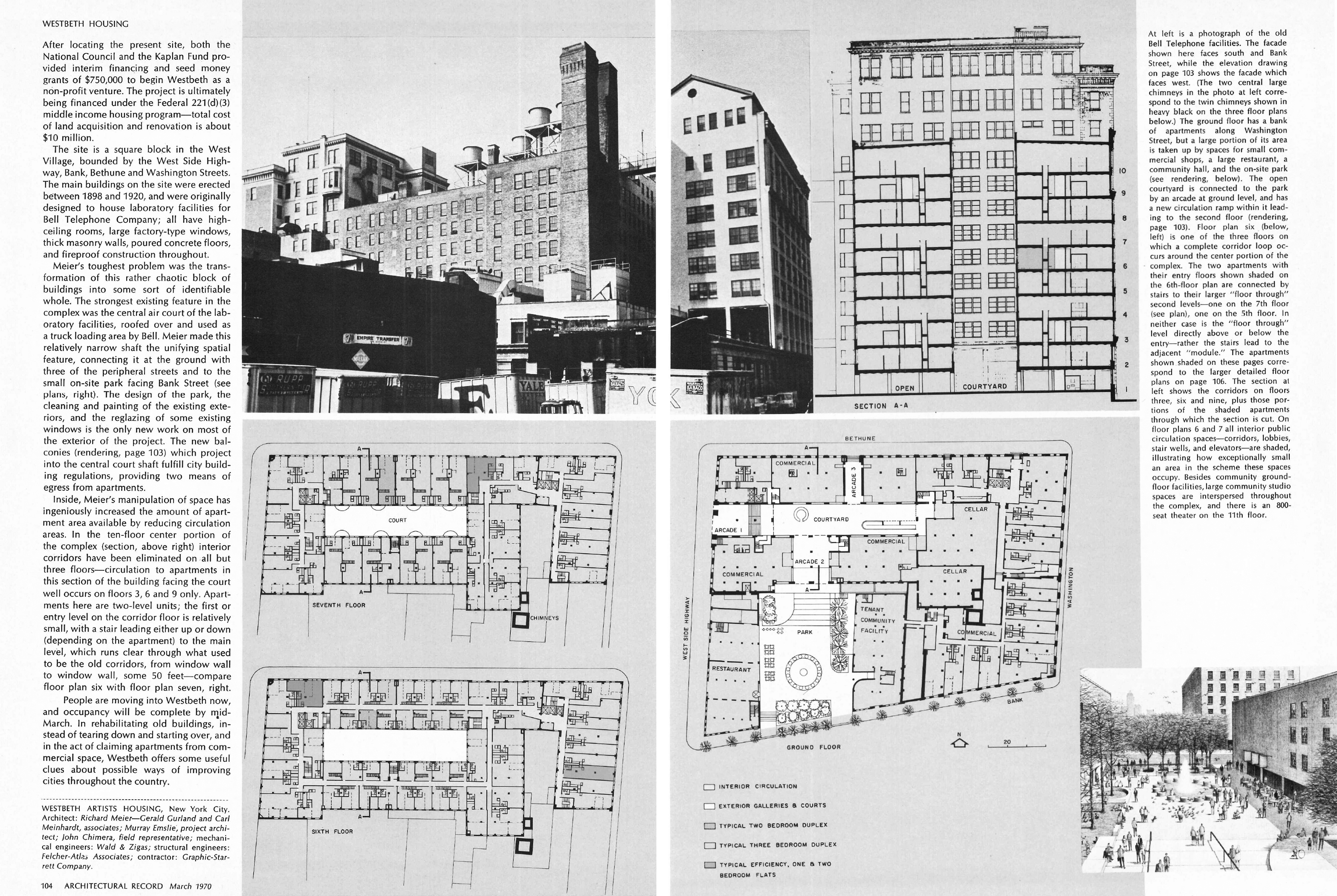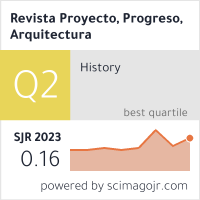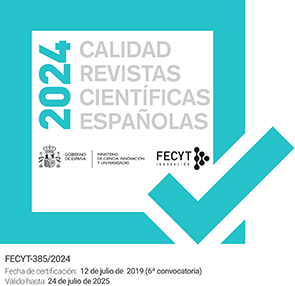LA FÁBRICA-CASA: HÁBITATS COLABORATIVOS Y PATRIMONIO INDUSTRIAL DESDE LOS 60 EN NYC
DOI:
https://doi.org/10.12795/ppa.2022.i27.11Palavras-chave:
patrimonio industrial, vivienda colaborativa, Nueva York, comunidad artística, regeneración creativa, rehabilitación adaptativaResumo
Nueva York, paradigma de la ciudad vertical, fue también escenario de procesos disruptivos que reaccionaban a las numerosas acciones de renovación urbana iniciadas en los años cincuenta en los que se adoptaba el modelo moderno residencial sobre operaciones de tabula rasa. En la siguiente década, desde el mundo del arte se produjeron ciertos proyectos que supusieron una alternativa habitacional en espacios productivos obsoletos Esta investigación, apoyada en la metodología de estudio de casos, presenta tres propuestas en las que antiguas industrias se relacionarían de forma innovadora y complementaria con el proyecto de vivienda colectiva. El primer caso, ideado por el artista I. Noguchi, con el apoyo de Buckminster Fuller, supuso la transformación de una antigua fábrica en un jardín abierto de esculturas en el contexto de la comunidad residencial de Astoria. Las dos iniciativas siguientes fueron impulsadas por J.K. Davidson y el J.M. Kaplan Fund: un sistema de viviendas cooperativas en el distrito manufacturero de SoHo ideado por el artista G. Maciunas y el arquitecto S. Shapiro, y un proyecto de conversión de los antiguos Bell Labs en el Westbeth Artists Housing, por el arquitecto R. Meier. Estas iniciativas pioneras indagarán en la construcción de hábitats inclusivos y colaborativos en espacios industriales, en su rehabilitación adaptativa y configuración como espacio doméstico creativo, así como en su significación como patrimonio contemporáneo.
Downloads
Referências
ALLOWAY, Lawrence. 100 Studios. En: 10 Downtown 10 Years (New York: P.S.1. Institute for Art and Urban Resources and 112 Workshop, 1978. Cat. coord. KLEIN, Gloria y P.S.1. Institute for Art and Urban Resources, 11/09/1977-02/10/1977; p. 7).
AMATEAU, Albert. City dubs Westbeth a landmark. The Villager, nov. 2011, vol. 81, n.º 22. pp. 3-9. Disponible en: http://thevillager.com/villager_445/citydubs.html [consulta 30-03-2014]
AULT, Julie. A Chronology of Selected Alternative Structures, Spaces, Artists’ groups, and Organizations in New York City, 1965-85. En: Alternative art, New York, 1965-1985: A Cultural Politics Book for the Social Text Collective. Minneapolis: University of Minnesota Press, 2002, pp. 17-59. ISBN 9780816637935.
BANES, Sally. The reinvention of Community. En: Greenwich Village 1963: Avant-Garde, Performance and the Effervescent Body. Durham: Duke University Press, 1993, pp. 33-80. ISBN 978-0-8223-9690-1.
BERKELEY, Ellen Perry. Westbeth: Artists in Residence. En: Architectural Forum. Boston: Architect’s World, oct. 1970, vol. 133, pp. 45-49.
BERMAN, Marshall I. Robert Moses: The Expressway World. En: All That Is Solid Melts Into Air: The Experience of Modernity. London: Penguin Books, 2010, pp. 291-312. ISBN 9781844676446.
BERNSTEIN, Roslyn; SHAPIRO, Shael. Illegal Living: 80 Wooster Street and the Evolution of SoHo. New York. Vilnius, Lithuania: The Jonas Mekas Foundation, 2010. ISBN 978-6099517209.
CARO, Robert. The Power Broker: Robert Moses and The Fall of New York. New York: Vintage Book Edition, 1974, p. 849.
CARRASCAL PÉREZ, María F. City and Art: Cross-dialogue on Space. New York in the 1970s. Directores: Carlos García Vázquez y Ángel Martínez García-Posada Tesis doctoral: Universidad de Sevilla, Departamento de Historia, Teoría y Composición Arquitectónicas, 2015. Disponible (resumen) en: https://idus.us.es/handle/11441/39112.
CARRASCAL PÉREZ, María F. The shared use of the cityscape. Revisiting the extraordinary case of SoHo. En: Revista de Teoría y Crítica Teatral [en línea]. Buenos Aires: Universidad de Buenos Aires, 2016, vol. 6301. , 2016, pp. 227-254 [consulta: 05-10-2022]. ISSN 1669-6301. Disponible en: http://revistascientificas.filo.uba.ar/index.php/telondefondo/article/view/3155.
CARRASCAL PÉREZ, María F. Pioneras de un acceso abierto a la ciudad: Alanna Heiss, Doris C. Freedman y Anita Contini. En: CHAVES MARTÍN, Miguel Ángel,ed. Visiones Urbanas. IX Jornadas Internacionales Arte y Ciudad. Actas del Congreso celebrado en Madrid (telemático) del 21 al 23 de octubre de 2020. Madrid: Grupo de Investigación Arte, Arquitectura y Comunicación en la Ciudad Contemporánea, Universidad Complutense de Madrid, 2021, pp. 617-626. ISBN 978-84-09-26948-8.
DAHL, Per-Johan. The story of Westbeth: discovering the abstract lines of an artists’ colony. The Journal of Architecture [en línea]. London: RIBA, 2014, vol. 19, n.º 3, p. 305-328 [consulta: 07-07-2022]. Disponible en: https://doi.org/10.1080/13602365.2014.929160.
FISHER, Silvia. Artists’ Housing: The Westbeth Rehabilitation Project. En: Architectural Record. Nueva York: McGraw Hill, march 1970, vol. 147, n.º 3, pp. 103-106. ISSN 0003-858X.
FLINT, Anthony. Wrestling with Moses. How Jane Jacobs took on New York’s Master Builder and Transformed the American City. New York: Random House, 2009. ISBN 9780812981360.
FRANK, Suzanne. IAUS, The Institute for Architecture and Urban Studies. An insider’s Memoir by Suzanne Frank. New York: Author House, 2011, p. 21. ISBN 9781452086965
GARCÍA PÉREZ, Anas. Cohousing: aprendiendo de experiencias extranjeras: estudio de casos para posibles aplicaciones en la ciudad de Madrid. En: XI Seminario Internacional de Investigación en Urbanismo, Barcelona-Santiago de Chile.Barcelona: Universitat Politècnica de Catalunya, junio 2019. ISSN 2604-7756. DOI: https://doi.org/10.5821/siiu.6651.
GAYLE, Margot; GAYLE Carol. Cast-Iron Architecture in America. The significance of James Borgadus. New York, London: W.W. Norton & Company, Municipal Art Society Library, 1998. ISBN 0393730158.
GILMARTIN, Gregory F. Landmark Law. En: Shaping the City. New York and the Municipal Art Society. Section 18. New York: Clarkson Potter Municipal Art Society Library. 1995. ISBN 051758574X.
GRAY, Christopher. The irascible ‘father’ of SoHo. Streetscapes: 80 Wooster Street. En: The New York Times, 15-03-1992 [consulta 30/06/2014]. Disponible en: http://www.nytimes.com/1992/03/15/realestate/streetscapes-80-wooster-street-the-irascible-father-of-soho.html.
GUILBAULT, Serge. De cómo Nueva York robó la idea de Arte Moderno. Valencia: Tirant lo Blanch, 2007. ISBN 978-84-8456-964-0.
HUDSON, James R. Invasion-Succession in SoHo. En: The Unanticipated City: Loft Conversions in Lower Manhattan. Amherst: University of Massachusetts Press, 1987. ISBN 0870235796.
MEIER, Richard. Westbeth and flexible code interpretations. En FISHER, Silvia. Artists’ Housing: The Westbeth Rehabilitation Project. En: Architectural Record. Nueva York: McGraw Hill, march 1970, vol. 147, n.º 3, pp. 103-106. ISSN 0003-858X.
MEIER, Richard. Richard Meier Arquitecto. 2.ª ed. Barcelona: Gustavo Gili, 1988, pp. 106-108.
MOVILLA VEGA, Daniel; ESPEGEL ALONSO, Carmen. Hacia la nueva sociedad comunista: la casa de transición del Narkomfin. Epílogo de una investigación. En: Proyecto, Progreso, Arquitectura. Hábitat y habitar [en línea]. Sevilla: Editorial Universidad de Sevilla, noviembre de 2013, n.º 9, pp. 26-49 [consulya: 05-10-2022]. ISSN 2171-6897. DOI: http://dx.doi.org/10.12795/ppa.2013.i9.02.
NOGUCHI, Isamu. A Sculptor's World. New York: Evanston: Harper & Row, 1968. ISBN 3869309156.
NOGUCHI, Isamu. The Isamu Noguchi Garden Museum. New York: Harry N. Abrams, Publishers. 1987, p. 11. ISBN 9780810929289.
PAGE, Max. The Creative Destruction of Manhattan, 1900-1940 [en línea]. Chicago: University of Chicago Press, 1999 [consulta 02/02/2022]. ISBN 9780226644769. Disponible en: https://hdl.handle.net/2027/heb.05832.
RUESCAS BAZTÁN, Juan. Objetos tenaces: adaptive reuse en Meatpacking, 1970-1985 [en línea]. Tesis Doctoral: Madrid: ETSA UPM, 2016 [consulta 28/02/2022]. DOI: https://doi.org/10.20868/UPM.thesis.40507.
SADAO, Shoji; BUCKMINSTER FULLER, Richard Buckminster; NOGUCHI, Isamu. Buckminster Fuller and Isamu Noguchi: best of friends. Milano: 5 Continents Editions, 2011, pp. 54-73. ISBN 978-8874395439.
SECCHI, Bernardo. Le condizioni sono cambiate. En: Casabella. Rivista Internazionale di Architettura. Milano: Mondadori, 1984, n.º 298- 99, p. 12. ISSN 0008-7181.
SOLÀ-MORALES, Ignasi de. Terrain Vague. Cambridge: Anyplace, 1995, p. 120.
SIMPSON, Charles R. The Achievement of Territorial Community. En: SoHo: The Artist in the City. Chicago: The Univ. of Chicago Press, 1981, pp. 153-188. ISBN 978-0226759371.
SMITHSON, Robert. Cultural Confinement. En: FLAM, Jack, ed., Robert Smithson. The Collected Writings. New York: New York University Press, 1979, p. 156. ISBN 9780520203853.
UNESCO. Políticas para la creatividad: Guía para el desarrollo de las industrias culturales y creativas. Francia: UNESCO, 2010. ISBN 978-92-3-304190-5. Disponible en: https://unesdoc.unesco.org/ark:/48223/pf0000220384.
VV. AA. Ten Solutions, Socrates Sculpture Park. New York, Long Island City: The Athena Foundation Inc., Municipal Art Society Library, 1986.
WILLIAMS, Jo. Designing neighbourhoods for social interaction: The case of cohousing. En: Journal of Urban Design. London: Taylor & Francis, 2005, vol. 10, n.º 2, pp. 195-227. ISSN 13574809. DOI: https://doi.org/10.1080/13574800500086998.
ENTREVISTAS Y VÍDEOS
BLACKWOOD, Michel, video grabado en Spotelo, Italia en junio de 1967. Citado en SADAO, Shoji; BUCKMINSTER
FULLER, Richard; NOGUCHI, Isamu. […] best of friends... op. cit., p. 185.
WEBS CONSULTADAS
The Noguchi Museum. http://www. noguchi.org/noguchi/Works [consulta: 29-06-2014].
http://www.queenswestvillager.com/about/detail/history_ of_long_island_city [consulta: 30-06-2014].

Publicado
Como Citar
Edição
Seção
Licença
Las ediciones impresa y electrónica de esta Revista son editadas por el Secretariado de Publicaciones de la Universidad de Sevilla, siendo necesario citar la procedencia en cualquier reproducción parcial o total.
Salvo indicación contraria, todos los contenidos de la edición electrónica se distribuyen bajo una licencia de uso y distribución “Creative Commons Atribución-NoComercial-SinDerivar 4.0 Internacional” ![]() . Puede consultar desde aquí la versión informativa y el texto legal de la licencia. Esta circunstancia ha de hacerse constar expresamente de esta forma cuando sea necesario.
. Puede consultar desde aquí la versión informativa y el texto legal de la licencia. Esta circunstancia ha de hacerse constar expresamente de esta forma cuando sea necesario.
Los autores/as que publiquen en esta revista aceptan las siguientes condiciones:
- Los autores/as conservan los derechos de autor y ceden a la revista el derecho de la primera publicación, con el trabajo registrado con la licencia de atribución de Creative Commons, que permite a terceros utilizar lo publicado siempre que mencionen la autoría del trabajo y a la primera publicación en esta revista.
- Los autores/as pueden realizar otros acuerdos contractuales independientes y adicionales para la distribución no exclusiva de la versión del artículo publicado en esta revista (p. ej., incluirlo en un repositorio institucional o publicarlo en un libro) siempre que indiquen claramente que el trabajo se publicó por primera vez en esta revista.
- Se permite y recomienda a los autores/as a publicar su trabajo en Internet (por ejemplo en páginas institucionales o personales) antes y durante el proceso de revisión y publicación, ya que puede conducir a intercambios productivos y a una mayor y más rápida difusión del trabajo publicado (vea The Effect of Open Access).








